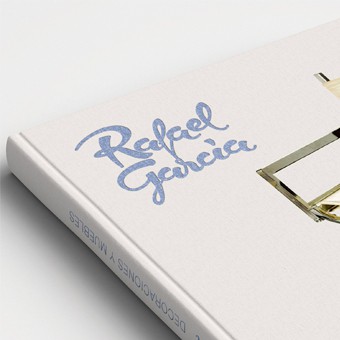Rafael Garcia Book Exhibition Catalogue by Ahmed Alejandro Lopez Martinez |
Home > Winners > #67138 |
 |
|
||||
| DESIGN DETAILS | |||||
| DESIGN NAME: Rafael Garcia Book PRIMARY FUNCTION: Exhibition Catalogue INSPIRATION: Create an attractive publication that would serve to revalue the work of a pioneer interior designer in his profession who introduced modern design in Spain and who had been forgotten. UNIQUE PROPERTIES / PROJECT DESCRIPTION: This catalogue provides information about the exhibition "Rafael Garcia Decorations and Furniture" held in le National Museum of decorative arts in Spain. The book contains texts by experts in design and art history. It has reproductions of drawings, patents, sketches and pieces of furniture and decoration. The designer was a pioneer in introducing objects of the European modern movement in Spain and add to the decoration of public and private institutions. The parts that are reproduced in the catalog were donated to the Museum. OPERATION / FLOW / INTERACTION: The book contains complementary information that could not be seen in the exhibition. Two chapters were added with photographs and sketches from private collections. It also includes an analytical index of the works and access to images on the internet. PROJECT DURATION AND LOCATION: The project started in November 2016 in Madrid and finished in January 2017 in Madrid, and was exhibited in National Museum of Decorative Arts collections in Madrid, Spain. |
PRODUCTION / REALIZATION TECHNOLOGY: The design was made with the Adobe Creative Suite software, as well as sketches and drawings for the layout. SPECIFICATIONS / TECHNICAL PROPERTIES: Dimensions: Width 240 mm, Height 300 mm, Book spine 23 mm, Number of pages 264 TAGS: Art catalog, Book, Publication, Print, Exibition Catalogue, Graphic Design RESEARCH ABSTRACT: An important part of the project consisted of cataloging, digitizes the paper works (sketches, drawings, photographs, drawings) and photograph three dimensional objects (furniture, lamps, sculptures, decorative arts,...). It was also necessary to the full-time study by two researchers studying the context and significance the designer in his time and the legacy for future generations of designers. CHALLENGE: The challenge was to give value to the work of a designer associated with the Franco dictatorship, power-related, but innovative turn because it introduced the modern movement in Spain at a time when the country was culturally isolated. It also introduced that modern design in a fascist State institutions and the most innovative country's bourgeoisie. ADDED DATE: 2018-03-10 00:16:55 TEAM MEMBERS (1) : IMAGE CREDITS: Alejandro Lopez Martinez, 2018 PATENTS/COPYRIGHTS: Patent No |
||||
| Visit the following page to learn more: http://alejandrolopez.eu/ | |||||
| AWARD DETAILS | |
 |
Rafael Garcia Book Exhibition Catalogue by Ahmed Alejandro Lopez Martinez is Winner in Print and Published Media Design Category, 2017 - 2018.· Press Members: Login or Register to request an exclusive interview with Ahmed Alejandro Lopez Martinez. · Click here to register inorder to view the profile and other works by Ahmed Alejandro Lopez Martinez. |
| SOCIAL |
| + Add to Likes / Favorites | Send to My Email | Comment | Testimonials | View Press-Release | Press Kit |







